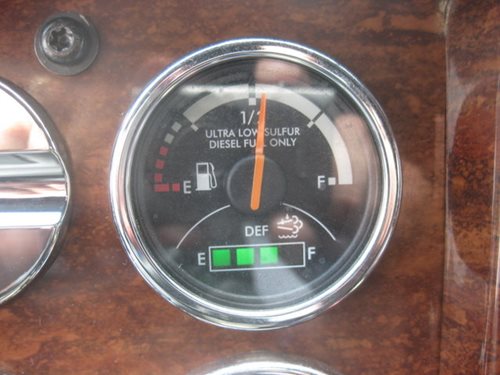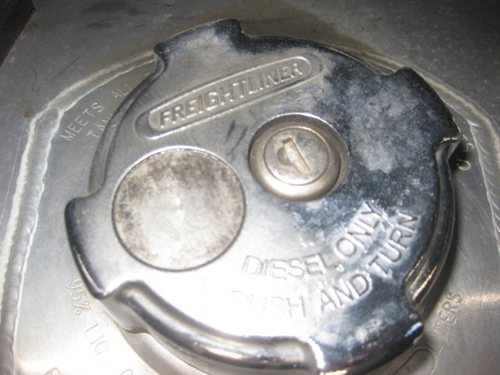
I often get asked the following question - “Does the excessive use of Jake Brakes waste fuel?” The answer to that question is yes and so does excessive use of your foundation brakes. This blog subject is in regards to how much fuel actually gets used to propel you down the highway. I spoke to an engineer friend of mine and he shared some interesting facts that I’ll pass along to you.
Let’s start out with 100% energy, which is stored inside the fuel tanks of the truck. Here is what happens when we turn this energy into mechanical movement through the process of burning it in an internal combustion engine. The combustion inside the engine turns that fuel into two things: heat and work. Heat (thermal energy) is what you do not want and work (mechanical energy) is what you do want.
Here are some approximate numbers using a state of the art, modern heavy-duty truck diesel engine, 57% of the fuel energy gets converted into heat, which only warms up the environment. 15% of the 57% is lost in exhaust gases, 39% is lost to the engine cooling system, to the charge air cooler, as well as heat radiating from the block. The last 3% of the 57% you lose driving accessories necessary to operate the engine such as the water pump, the oil pump and the fuel injection pump.
So we have 43% of the fuel energy left that is converted into mechanical energy to power the crankshaft, but we are not ready to go trucking down the road yet! Here is what comes out of the 43%. We use 1% to drive accessories that are not necessary to operate the engine but rather the truck in a safe and comfortable manner. These include the alternator, the power steering pump, the air compressor, the fan and the air conditioning unit.
In the case of a modern, state of the art aerodynamic truck with a standard dry van trailer we lose 19% of that mechanical energy to push the air under, over and around the truck. This 19% is known as aerodynamic drag. Approximately another 16% of the mechanical energy is used to deform the tires as they roll over the road surface under the weight of your truck. This last 16% is known as rolling resistance. Then another 3% is lost through friction in the drive train: transmission, drive shafts and driven axles. The final 4% of the mechanical energy is used for braking.
Here is the answer to the question… Does a Jake Brake waste fuel? Brakes in general convert 4% of mechanical energy back into heat. We all know we have to brake every now and then, so what can be helped here is eliminating the hard, excessive and unnecessary braking. The reason for this is the mechanical energy generated in the engine by combusting your fuel propels your truck forward. Braking converts this forward energy back into heat inside your brake systems. After you are finished braking, that heat is lost and it requires new fuel to be burned to propel you forward again.
All these figures are for a state of the art aerodynamic tractor and power train with the average dry van trailer in a typical US line haul operation.
Now we need to think about how we use these figures to increase the efficiency of our operation. I like to think of how I drive my truck as the management of energy – heat and work that is. When you accelerate to a higher speed than you need between lights and have to hit the brakes hard for a red light this makes your productive use of mechanical energy low. Stopping unnecessarily is hard on your fuel consumption as well as stopping at the bottom of hills. Backing out of the throttle early and coasting into red lights and stop signs is one easy way to save fuel. I try to take my rest breaks on top of a hill. This way I can use the hill to slow down on the way up, and in the morning I use the downgrade of the hill to give me free energy to get going instead of solely relying on my engine. Rain, wind, and cold dense air all affect these numbers either adversely or positively from what was given to me.
This knowledge of energy management does not only help me in operating my truck but gives me a greater appreciation on the way my truck is spec’d. Let me explain. The engine in my Cascadia is the latest 2014 DD15 and uses an SCR after treatment exhaust system. Further improvements in thermal efficiency have been introduced such as: proprietary asymmetric turbo charger, next generation ACRS fuel system, optimized piston design, variable speed water pump, revised oil pump and 10/30 motor oil.
When Freightliner gave me the opportunity to spec out my dream truck for fuel mileage, I took into consideration whatever kills bugs pushes against the air and costs fuel. I spec’d an aerodynamic cab; left out bug killers such as hood mounted mirrors, bug deflector, and the sun visor, and equipped it with side, top and bottom aerodynamic devices. I optimized the trailer gap and equipped the trailer with a nose cone and side skirts. I did all of this to minimize the use of mechanical energy to push to air around my truck and trailer.
I then picked the latest Michelin wide based single tires on my truck and trailer, and energy efficient Michelin steer tires. This tire package offers the lowest rolling resistance available today.
Some additional ways in which I’ve reduced my energy losses in the drive train were to select the Detroit DT12 Transmission and a 6 X 2 axle configuration that uses one unpowered axle instead of a typical tandem drive axle. The DT12 transmission allows for more of the fuels energy to pass through the drive line due to its single countershaft design and direct drive. Direct drive vs. overdrive has fewer moving parts in high gear which reduces the amount of parasitic drag. The 6x2 axle configuration also reduces the amount of mechanical energy that gets converted into heat due to friction in the drive axles.
Last but not least I paid attention to spec’ing light weight components such as an aluminum cab, aluminum wheels on tractor and trailer, single exhaust pipe, aluminum fifth wheel, etc. More weight directly increases the amount of mechanical energy that gets converted into heat by the braking systems.
So as you can see there are many contributing factors which affect your fuel efficiency.
http://www.ftexploring.com/energy/first-law_p2.html
I wish we could just keep our fuel locked away, but then all movement would end.
